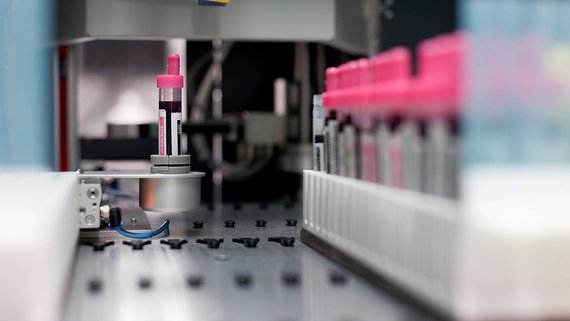The German Biobank Node (GBN) will be integrated into the Network of University Medicine (NUM) on 1 July 2025. This decision coincides with last week's approval of the new funding phase of the NUM (NUM 3.0) by the Federal Ministry of Education and Research (BMBF). The continuation of the NUM with all stakeholders announced yesterday in the coalition agreement between the CDU, CSU and SPD for the 21st legislative period thus also opens up a great opportunity for the GBN to continue the successful work of recent years in the NUM on a permanent basis. The combination of GBN and NUM brings together what belongs together - the combined expertise of the biobank community and the German academic medical research landscape. As part of the integration, GBN will also operate under the new name "German Biobank Network (GBN)" from July. The German Biobank Alliance (GBA) coordinated by GBN will be merged into it.
"The integration into the NUM is a logical development of our successful work over the last ten years," says PD Dr Sara Y. Nußbeck, Spokesperson of the GBN Board of Directors. "The close connection to university medicine will further increase the use of quality-assured human biosamples and associated data for research and improve access for scientists."
Dr Gabriele Anton, GBN Board Member and Co-Head of the Biospecimen Hub at the NUM, adds: "By integrating the biobanks into the NUM, we are not only pooling resources, but also strengthening cooperation between the biobanks and other NUM infrastructures, such as the Data Integration Centres, in order to be able to offer researchers data and biospecimens from a single source in the future."
GBN: from the beginnings to the central umbrella organisation
Since its beginnings in 2014, the GBN has established itself as the central umbrella organisation for academic human biobanks in Germany. With the founding of the German Biobank Alliance (GBA), which now comprises 36 sites and together provides around half a million biosamples for research projects every year, the GBN has made a significant contribution to harmonisation and networking in biobanking. In addition, the GBN is closely integrated into the European biobanking landscape as a national node of the European Reseach Infrastructure BBMRI-ERIC. "Inclusion in the NUM enables even closer integration of biobanks and clinical research," emphasises Dr Cornelia Specht, Managing Director of the GBN. "At the same time, it opens up new potential for the NUM for the cross-border exchange of biosamples and data as well as for joint international research projects."
Integration into the NUM: new opportunities for research and networking
The NUM also sees the integration of the GBN as setting an important course for the future: "Biobanks are essential building blocks of clinical and clinical-epidemiological research," says Ralf Heyder, Head of the NUM Coordination Office, "Combining the resources and expertise of the GBN with academic medical research throughout Germany will make an important contribution to the further development of personalised medicine."
Future prospects for biomedicine in Germany
Together with the planned further development of the NUM into a permanent support infrastructure for clinical research, the integration of the GBN is a decisive step towards creating sustainable structures for biomedical research in Germany. In future, researchers from academic medical centers, academic institutions and other research facilities will have even easier access to high-quality biosamples and data.
Contact
- Verena Huth (German Biobank Node), phone +49 30 450 536 354,
e-mail: verena.huth@charite.de, - Stephanie Strehl-Dohmen (Network of University Medicine), phone +49 173 2780519,
e-mail: stephanie.strehl-dohmen@charite.de
About the German Biobank Node (GBN)
Under the umbrella of the German Biobank Node (GBN), academic biobanks at 36 locations and an IT development centre have joined forces in the German Biobank Alliance (GBA). The GBA biobanks establish common quality standards and make their human biosamples and associated data available for medical research. As the German representative in the European biobank network BBMRI-ERIC, the GBN promotes the harmonisation and networking of biobanks in Europe. With the integration into the NUM, GBN and GBA will operate under the new name German Biobank Network (GBN) from July 2025. Further information: https://www.bbmri.de/
About the Network of University Medicine (NUM)
For the first time, all 37 sites of German university medicine are carrying out large interdisciplinary clinical research projects together in the NUM. Launched to coordinate COVID-19 research in German university medicine, the focus today is on the joint collection and utilisation of complex medical research data in a clinical context. To this end, the network has established specialised Reseach Infrastructures: https://www.netzwerk-universitaetsmedizin.de/



